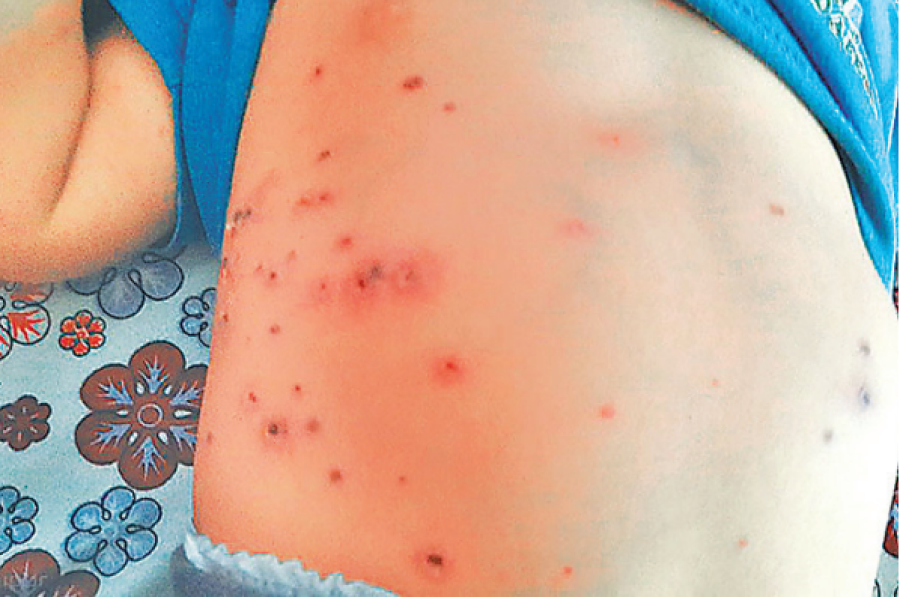Bagmati Province
Scrub typhus mounts public health challenge in Chitwan district
The spread of the disease coincides with a dengue outbreak, which has hit the district hard.
Ramesh Kumar Paudel
Scrub typhus, a disease caused by the bite of an insect living on the body of a rat, has assumed alarming proportions in Chitwan. As many as 284 people have been diagnosed with the disease in the district since mid-July, according to vector control inspector Ram KC, who is the information officer of Chitwan Health Office. Of which, 55 patients from Bharatpur Metropolitan City alone.
Scrub typhus, also known as bush typhus, is an infectious disease caused by the parasite Orientia tsutsugamushi, a mite-borne bacterium. It spreads in humans when bitten by infected chiggers (larval mites) found in mice.
On October 11, Bharatpur Hospital issued a press release, appealing the public to be cautious of the disease after it was found in fever patients admitted at the hospital. Officials said most of the patients visited the hospital after a week of illness and showed complex symptoms.
The rise in scrub typhus has coincided with the dengue outbreak in Chitwan. As many as 1,083 people have been diagnosed with dengue so far at the Bharatpur Hospital, including 90 on Saturday alone. Chitwan is one of the hardest hit districts by dengue this year.
“There were only a few cases of dengue in our hospital till a month ago but there were many patients infected with scrub typhus,” said Dr Govind Kandel, a senior consultant physician and spokesperson of Bharatpur Hospital. “Even now, the situation has not changed, so it is necessary for people to be aware and cautious.”
The mites that cause scrub typhus sit in the ears of rats or a shrew and cause the disease to transmit from rats to humans, Kandel explained. “Only after five days after the onset of fever, it can be tested to confirm whether one has scrub typhus or not,” he said. “Some people may have a fever within a day or two but sadly it cannot be confirmed whether it’s a symptom of scrub typhus until day five.”
People infected with scrub typhus develop fever, body aches, laziness, body cramps and red skin. In 40 percent of the cases, a small wound with black scar is left where the mite has bitten the human. These symptoms are visible for the first week. After a week, the disease becomes complicated and challenging, blood pressure drops, kidney and liver are affected and skin rashes can also be seen, Kandel said.
This neglected tropical disease has been emerging as a new health challenge in Chitwan. If the disease is not diagnosed and the medicine is not given in time, then the patient's condition can worsen a lot. The symptoms of scrub typhus include headache, body aches and muscle pain, a dark, scab-like region at the site of the chigger bite (also known as eschar), mental changes, ranging from confusion to coma, and enlarged lymph nodes, among other things.
Dr Kandel said that there are many patients in serious condition who need to be kept in the ICU at the hospital. If the disease is detected early, it can be cured easily. The disease may be prevalent in the community, Kandel said, because the disease is detected only when the patients in critical condition come to the hospital and are examined. “Apart from the hospital’s data, there are so many infected people out in the district,” he said.
According to KC, information officer of the Chitwan Health Office, the outbreak of this disease usually starts with the onset of monsoon and lasts till December.
KC suggests Chitwan residents to avoid going to the fields, squares and bushes with body parts exposed. “Avoid going to possible places where rats can breed and if you must, take precautions,” he said.




 9.12°C Kathmandu
9.12°C Kathmandu1.jpg)











